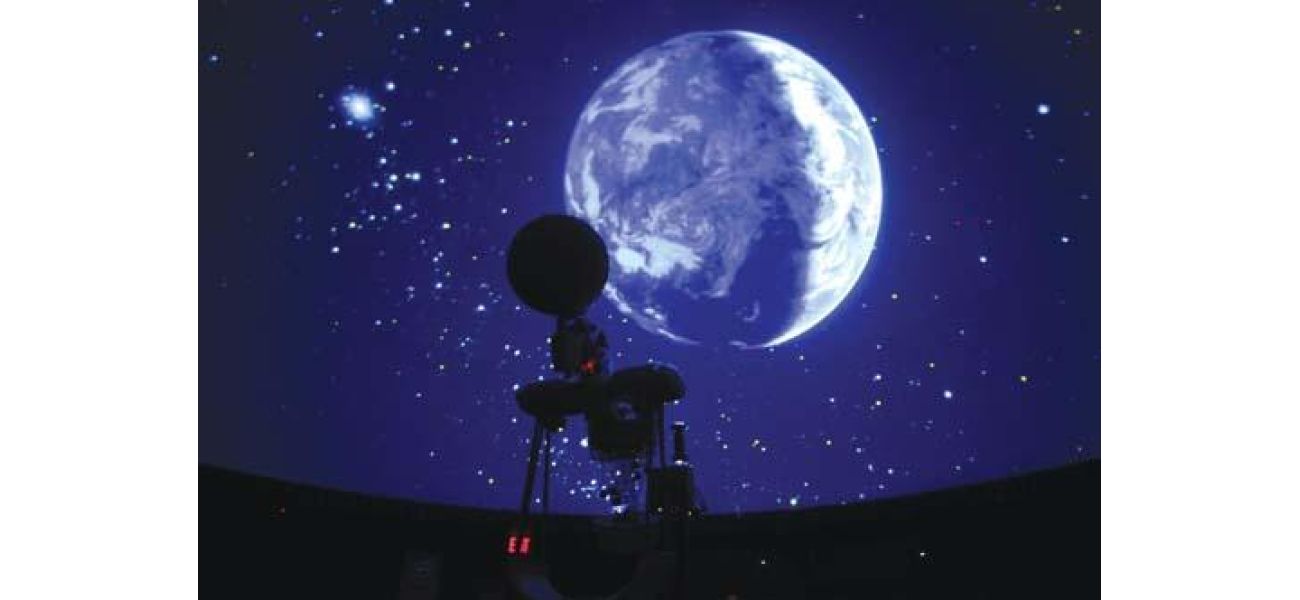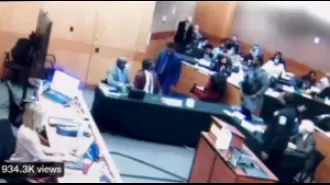Hacking the planet requires rules and boundaries, according to Lara Williams.
November 15th 2024.

A few years ago, solar geoengineering was considered a sort of science fiction. These days, it’s fast becoming a reality. Without international consensus on the guardrails and guidelines, that’s a very dangerous prospect.
The technique, also known as solar radiation management, encompasses a range of technologies including sunshields in space, marine cloud brightening and stratospheric aerosol injection . They all work in slightly different ways but the goal is the same: reduce the amount of sunlight reaching the Earth’s surface in an effort to turn down the global thermostat.
The technology is controversial for a multitude of reasons. It offers some seductive opportunities, especially as we remain well on track for between 2.6C and 3.1C of warming this century and are possibly edging toward catastrophic tipping points such as the collapse of the crucial Atlantic Meridional Overturning Circulation , a system of ocean currents that plays an important role in moderating Europe’s climate.
Some scientists are convinced that SAI, which releases tiny particles into part of the upper atmosphere, would work to cool the planet because of observations made after volcanic eruptions. Proponents argue it could buy us more time to cut emissions and scale up carbon dioxide removal, while decreasing the risks of coral bleaching and glacier melt.
Related Articles
Opinion |
Carl P. Leubsdorf: Defeated Democrats face an uncertain future
Opinion |
Tyler Cowen: Trump’s tariffs won’t work, just as McKinley’s didn’t
Opinion |
Karin Klein: Why grade inflation is spreading from high school to college — and how it hurts learning
Opinion |
Trudy Rubin: To predict what Trump will do at home, look at the strongmen he most admires overseas
Opinion |
Karishma Vaswani: A new North Korean headache awaits Trump
Yet the risks and uncertainties are huge. Solar geoengineering is akin to popping a painkiller rather than finding a cure — it would only tackle a symptom of climate change, rather than addressing the cause. Once you start, you have to keep doing it or risk a termination shock, a rapid and damaging rise in temperatures. Then there is a plethora of risks that are poorly understood, from the effects on global precipitation patterns, human health and ecosystems. It will do nothing to address the other pervasive impacts of a higher concentration of CO2 in the atmosphere, such as ocean acidification, and could undermine efforts to halt global warming.In the not-so-distant past, the idea of solar geoengineering was seen as something out of a sci-fi movie. But now, it's becoming more of a reality with each passing day. However, without clear global agreements on how to use this technology, it could pose great danger to our planet.
Solar geoengineering, also known as solar radiation management, involves various methods such as placing sunshields in space, brightening marine clouds, and injecting aerosols into the stratosphere. While each technique has its own unique approach, their ultimate goal is to reduce the amount of sunlight reaching the Earth's surface in order to cool down the planet.
But this technology is not without controversy. On one hand, it presents tempting opportunities as our planet is on track for a significant increase in temperature and we may be approaching dangerous tipping points, such as the collapse of the Atlantic Meridional Overturning Circulation. On the other hand, there are concerns about the potential risks and uncertainties associated with solar geoengineering.
Some scientists believe that stratospheric aerosol injection (SAI) could be effective in cooling the planet, as seen in the aftermath of volcanic eruptions. Proponents argue that it could give us more time to reduce emissions and implement carbon dioxide removal methods, while also mitigating the devastating effects of coral bleaching and glacier melt.
However, there are significant risks involved. Solar geoengineering may provide temporary relief, but it does not address the root cause of climate change. It's like taking a painkiller for a symptom instead of finding a cure for the underlying illness. Moreover, once we start using this technology, we cannot simply stop without facing a "termination shock" - a sudden and harmful spike in temperatures.
Furthermore, there are numerous risks that are not fully understood, such as the impact on global precipitation patterns, human health, and ecosystems. In addition, solar geoengineering does not address other consequences of increased CO2 levels, such as ocean acidification, and it could potentially hinder efforts to combat global warming.
In conclusion, while solar geoengineering may seem like a quick fix, it's important to carefully consider all the potential risks and uncertainties before implementing it on a global scale. We must work towards finding long-term solutions to address the root causes of climate change, rather than just treating the symptoms. Only by working together and finding sustainable solutions can we ensure the survival of our planet for future generations.
The technique, also known as solar radiation management, encompasses a range of technologies including sunshields in space, marine cloud brightening and stratospheric aerosol injection . They all work in slightly different ways but the goal is the same: reduce the amount of sunlight reaching the Earth’s surface in an effort to turn down the global thermostat.
The technology is controversial for a multitude of reasons. It offers some seductive opportunities, especially as we remain well on track for between 2.6C and 3.1C of warming this century and are possibly edging toward catastrophic tipping points such as the collapse of the crucial Atlantic Meridional Overturning Circulation , a system of ocean currents that plays an important role in moderating Europe’s climate.
Some scientists are convinced that SAI, which releases tiny particles into part of the upper atmosphere, would work to cool the planet because of observations made after volcanic eruptions. Proponents argue it could buy us more time to cut emissions and scale up carbon dioxide removal, while decreasing the risks of coral bleaching and glacier melt.
Related Articles
Opinion |
Carl P. Leubsdorf: Defeated Democrats face an uncertain future
Opinion |
Tyler Cowen: Trump’s tariffs won’t work, just as McKinley’s didn’t
Opinion |
Karin Klein: Why grade inflation is spreading from high school to college — and how it hurts learning
Opinion |
Trudy Rubin: To predict what Trump will do at home, look at the strongmen he most admires overseas
Opinion |
Karishma Vaswani: A new North Korean headache awaits Trump
Yet the risks and uncertainties are huge. Solar geoengineering is akin to popping a painkiller rather than finding a cure — it would only tackle a symptom of climate change, rather than addressing the cause. Once you start, you have to keep doing it or risk a termination shock, a rapid and damaging rise in temperatures. Then there is a plethora of risks that are poorly understood, from the effects on global precipitation patterns, human health and ecosystems. It will do nothing to address the other pervasive impacts of a higher concentration of CO2 in the atmosphere, such as ocean acidification, and could undermine efforts to halt global warming.In the not-so-distant past, the idea of solar geoengineering was seen as something out of a sci-fi movie. But now, it's becoming more of a reality with each passing day. However, without clear global agreements on how to use this technology, it could pose great danger to our planet.
Solar geoengineering, also known as solar radiation management, involves various methods such as placing sunshields in space, brightening marine clouds, and injecting aerosols into the stratosphere. While each technique has its own unique approach, their ultimate goal is to reduce the amount of sunlight reaching the Earth's surface in order to cool down the planet.
But this technology is not without controversy. On one hand, it presents tempting opportunities as our planet is on track for a significant increase in temperature and we may be approaching dangerous tipping points, such as the collapse of the Atlantic Meridional Overturning Circulation. On the other hand, there are concerns about the potential risks and uncertainties associated with solar geoengineering.
Some scientists believe that stratospheric aerosol injection (SAI) could be effective in cooling the planet, as seen in the aftermath of volcanic eruptions. Proponents argue that it could give us more time to reduce emissions and implement carbon dioxide removal methods, while also mitigating the devastating effects of coral bleaching and glacier melt.
However, there are significant risks involved. Solar geoengineering may provide temporary relief, but it does not address the root cause of climate change. It's like taking a painkiller for a symptom instead of finding a cure for the underlying illness. Moreover, once we start using this technology, we cannot simply stop without facing a "termination shock" - a sudden and harmful spike in temperatures.
Furthermore, there are numerous risks that are not fully understood, such as the impact on global precipitation patterns, human health, and ecosystems. In addition, solar geoengineering does not address other consequences of increased CO2 levels, such as ocean acidification, and it could potentially hinder efforts to combat global warming.
In conclusion, while solar geoengineering may seem like a quick fix, it's important to carefully consider all the potential risks and uncertainties before implementing it on a global scale. We must work towards finding long-term solutions to address the root causes of climate change, rather than just treating the symptoms. Only by working together and finding sustainable solutions can we ensure the survival of our planet for future generations.
[This article has been trending online recently and has been generated with AI. Your feed is customized.]
[Generative AI is experimental.]
0
0
Submit Comment





